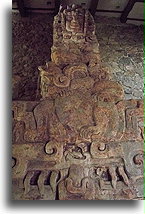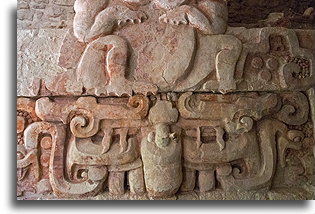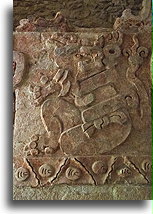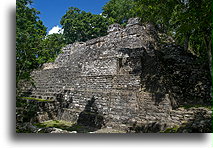
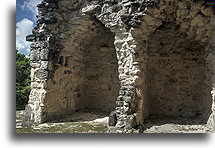
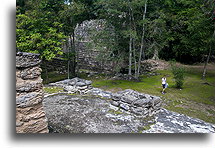
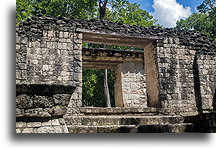
Balamku is a small Maya town inhabited from around 300 BC until probably AD 1000. Long forgotten, it was discovered very recently, in 1990. Walking between partially restored structures, we noticed various architectural styles of buildings, different from those we have seen so far. We learned that styles of Balamku are a combination of Peten tradition of cities in the south and architectural elements of the style called Rio Bec.
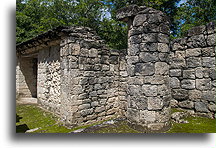
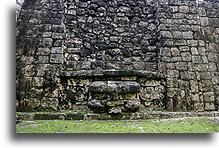
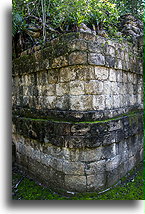
An interesting thing found in Balamku is a painted frieze, part of the upper façade of one of the buildings. The frieze is 17 meters/ 56 feet long and is the largest in the world of the Maya that has survived to our time. It dates from around the 5th century AD. The frieze depicts the beliefs of the people of the time, their rulers, and deities in an abstract Maya-typical form. The animals are often hybrids; the Jaguar has a reptile face or is in a kneeling pose of a captive with tied arms. Kings emerge from a toad or crocodile, suggesting their heavenly origin. Amphibians arise from the monsters of the underworld and are a connection between two worlds. Reptiles accompanied by aquatic plants are emblems of earth fertility. The whole frieze is a glorification of the reign.
